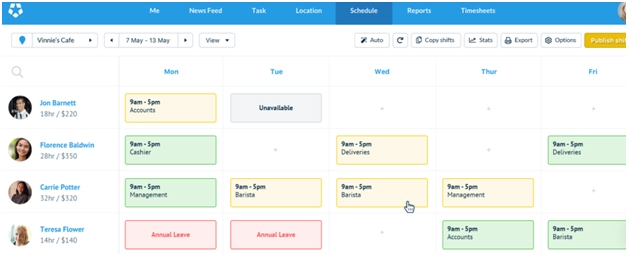
Survey reveals workers feeling remarkably productive during COVID-19 pandemic (and insights to maintain remote team efficiency)
If you’re business is like most organizations, the COVID-19 pandemic has radically forced you to modify your working arrangements for your employees — from physical spaces to mostly virtual.
This throws off course your management routines and your teams’ working dispositions, impacting everyone’s collaborative efforts and performance effectiveness during the pandemic.
The question is: is it for better or worse? If your case is the latter, how can you restore your employees’ drive and productivity?
Find out what the Boston Consulting Group (BCG) uncovered in their study and their insights on maintaining your remote team’s efficiency while the COVID-19 crisis ensues.
Overview of BCG’s Survey and Its Findings
From May to June 2020, BCG conducted a survey assessing employees’ sentiments and attitudes on the impacts the COVID-19 pandemic brought on their productivity, well-being, flexibility, sense of career security, learning paths, company culture, and working tools used.
BCG surveyed over 12,000 professionals hired before and during the COVID-19 pandemic in the US, India, and Germany. These employees held positions and functions as analysts, HR staff, teachers, engineers, and healthcare providers (generally those that did not require on-site performance, such as assembly line workers and cashiers).
The pandemic has undoubtedly disrupted the usual physical workplace experience, with some 40% moving to virtual arrangements. Surprisingly, though, respondents say they are just as or more productive working during the pandemic — whether they stayed on-site, virtual, or transitioned to a work-from-home set-up.
Around 75% of the workers claimed to have maintained or enhanced their efficiency on individual tasks, such as administrative duties, data analysis, and writing and creating presentations.
However, for those working on collaborative responsibilities from company to home offices, 56% said they became less productive during the pandemic.
Focusing on collaborative tasks — which are presumed to be harder in the new operating set-up pushed by COVID-19 protection measures — the survey probed and discovered four contributing factors to perceived personnel productivity (whether on-site or online).
These are mental health, social connectivity, physical connectivity, and workplace tools.
The survey also found that 79% of the personnel who reported their satisfaction on all four factors were able to retain or enhance their productivity on collaborative assignments.
By contrast, among employees who are unhappy or worse off on three or four of the said factors, only 16% confidently indicated their ability to retain or improve their efficiency. That presents a gap of nearly 400%.
These findings imply managers' need to design practical, compelling, needs-based virtual working experiences, particularly on cooperation-crucial assignments, if they want their remote staff to become happy and consequently productive.
Insights from the BCG Survey
With those four factors and relevant findings in mind, here are some tips and practices to consider when customizing your remote working set-ups for higher staff productivity:
1. Be open to flexible work models.
BCG’s survey revealed that 60% of the respondents wanted some flexibility when and/or where they worked. Remarkably, more than 70% of the surveyed managers, thought to be unreceptive to hybrid working models, are open to flexible set-ups for their teams.
Suppose you are considering tweaking your team's shifts and workplace arrangements during the pandemic but still want to systematize it. In that case, one of the best ways to pull this off is by using efficient employee scheduling tools.
Try online rota software tools such as Deputy. It lets you build schedules with the right staff across various job designations and locations, share these with your team, and handle shift swaps smoothly and quickly, without needing to text or call them.

It also has auto-scheduling features powered by artificial intelligence to optimize shift assignments. You can even get and compare real-time data on your wage costs against your sales, so you can enhance your labor cost percentage.
Deputy also allows you to schedule your staff’s meal and rest breaks and manage overtime and fatigue, recharging their productivity even as they work from home.
2. Meet and celebrate virtually.
The BCG survey shows us how social connectivity boosts collaborative productivity, which, in turn, drives increased efficiency, skills development, and innovation.
In the office, employees can recharge socially in simple, spontaneous ways such as visiting a colleague for chit chats, taking water cooler breaks, eating out together at lunch, celebrating birthday dinners, and others.
Virtually recreate those moments to continue building your social capital with your remote personnel. Here are some ideas from companies:
- GitLab, an online services company, urges its workers to allocate a few hours every week for virtual coffee recess and casual conversations with colleagues on Slack. It even organized a “Random Room” on Google Hangouts for the workers to drop in anytime, just like their in-office water cooler moments.
- A software company, Clevertech, lets its workers play video games that mimic collaborative projects, require cooperation, and empower the team to solve complicated problems.
Additionally, virtually celebrate colleagues' birthdays and special occasions to bolster your teams' social relationships, especially for future projects. As managers, you need to find ways to deliberately curb the relational distance for your online groups, including new hires.
3. Focus on employee well-being.
Heed your employees’ mental, physical, and emotional well-being since it contributes greatly to their remote work efficiency.
For instance, schedule your workforce shift assignments properly to avoid excessive overtime, unbalanced workloads, and physical and mental exhaustion. Discourage opening of emails after work hours and motivate employees to balance their personal and professional lives.
Your Human Resources (HR) department can also organize webinars on cultivating emotional well-being, avoiding staff burnout, and the like, online company fitness classes, and therapy sessions.
Managers, the HR division, and colleagues should also facilitate both spontaneous and scheduled regular catch-ups and ask how they are doing.
In this way, you can ensure your teams adjust to their new work arrangements more seamlessly and cope well in their personal and professional lives.
Boost your staff productivity during the pandemic.
Remote team efficiency and employee productivity are still feasible even at the pandemic's peak with significant tweaks in your working set-up.
In customizing these arrangements, check on your employees’ needs and come up with the best ways to retain and boost their collaborative productivity — since a large part of your company’s success relies on it, especially during the pandemic.
In the end, applying the necessary remote work adjustments will be a worthy investment with great paybacks on business performance and employer-staff relationships. You can even carry on these tweaks in the post-COVID-19 period.
Header Photo: Ivan Samkov, Pexel








